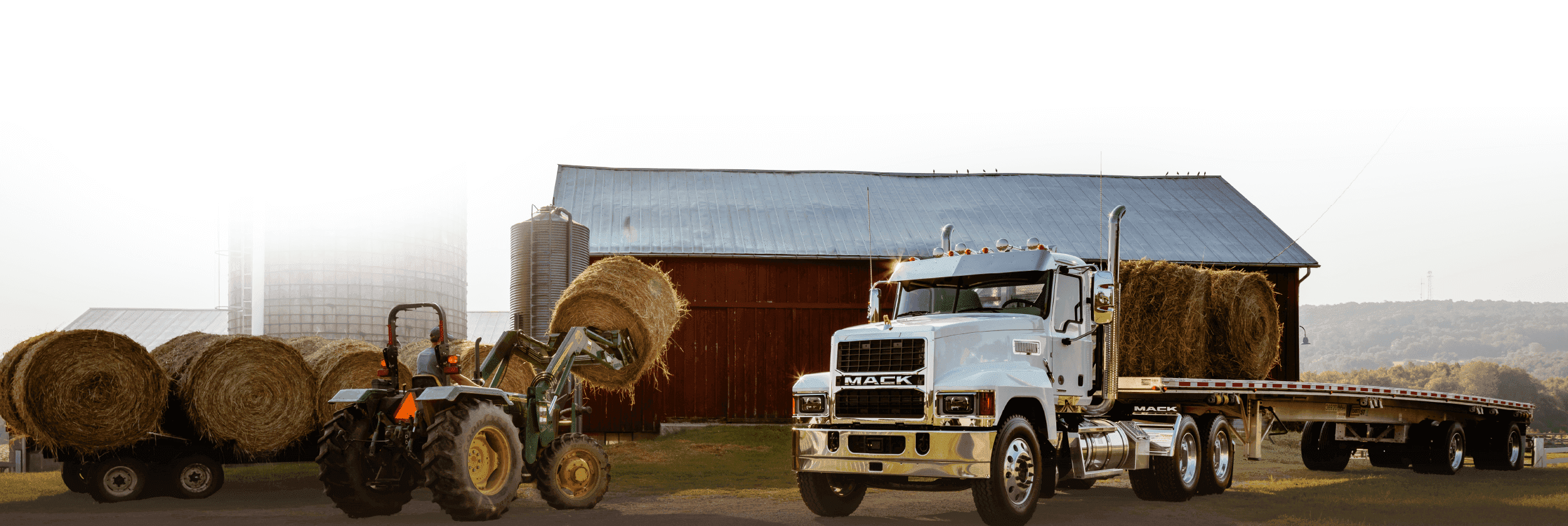Midwest harvest season is a high-stakes, time-sensitive operation. Once the grain is ready, the clock starts ticking and every delay costs time, money, and yield. From erratic weather to equipment limitations, farmers, co-ops, and logistics teams face real pressures that demand solid planning and flexible resources.
Here’s a closer look at five recurring challenges in ag transport during harvest and key tactics to stay ahead.
1. Weather doesn’t wait — neither should your equipment
The challenge: Unpredictable weather in the Midwest can compress the harvest window to just a few days. Any equipment failure, whether it’s a truck, trailer, or transfer system can force downtime that puts the crop at risk.
- Conduct pre-season inspections on all hauling equipment.
- Build contingency into your fleet, whether via rentals or backup trucks.
- Monitor forecasts daily and schedule logistics around ideal field conditions.
- Use leasing or rental partners who can scale with demand, not just sell.
2. Equipment breakdowns at peak workload
The challenge: Harvest pushes machines to the limit—12 to 16-hour days, repeated hauls, and heavy loads. A single breakdown mid-run can stall combines and overload grain carts, creating costly delays across the entire operation.
- Schedule preventive maintenance before harvest kicks off.
- Keep critical parts (e.g., belts, wheel seals, air dryers) on hand.
- Consider working with service providers like TEC who offer mobile repairs or priority harvest support.
- Use equipment telematics to track engine hours and flag potential issues early.
3. Not enough trucks to move the crop
The challenge: Strong yields can overwhelm even well-prepared fleets. Long elevator lines and limited bin space create bottlenecks, requiring fast adjustments in transportation capacity.
- Supplement internal fleets with flexible rentals. Look for day cabs, sleepers, and grain trailers that match your specs.
- Stagger hauls to avoid elevator congestion.
- Partner with rental providers who allow short-term and peak-season use without long contracts.
4. Rising operating costs squeeze margins
The challenge: With fuel prices, wages, and parts all climbing, even small inefficiencies during harvest season can erode profitability.
- Opt for fuel-efficient models, modern sleepers and day cabs are often spec’d for better economy.
- Use tax strategies like Section 179 deductions to offset equipment investment (consult your tax advisor).
- Stick to a maintenance schedule. Preventive service reduces repair frequency and extends truck life.
5. Parts shortages and supply delays
The challenge: When a minor part fails mid-harvest, lead times of even a few days can disrupt operations. With national supply chain unpredictability, waiting for inventory is risky.
- Work with parts suppliers like TEC, who stock both OEM and aftermarket lines.
- Build a list of parts you typically need each season and order early.
- Use suppliers who offer same-day delivery or in-field drop-offs during harvest.
Support your harvest strategy with reliable logistics
Whether you manage a single truck or a full ag-hauling fleet, planning ahead for the demands of Midwest harvest season makes all the difference. From equipment inspections and service scheduling to short-term rentals and parts stocking, small decisions now can prevent major delays later.






